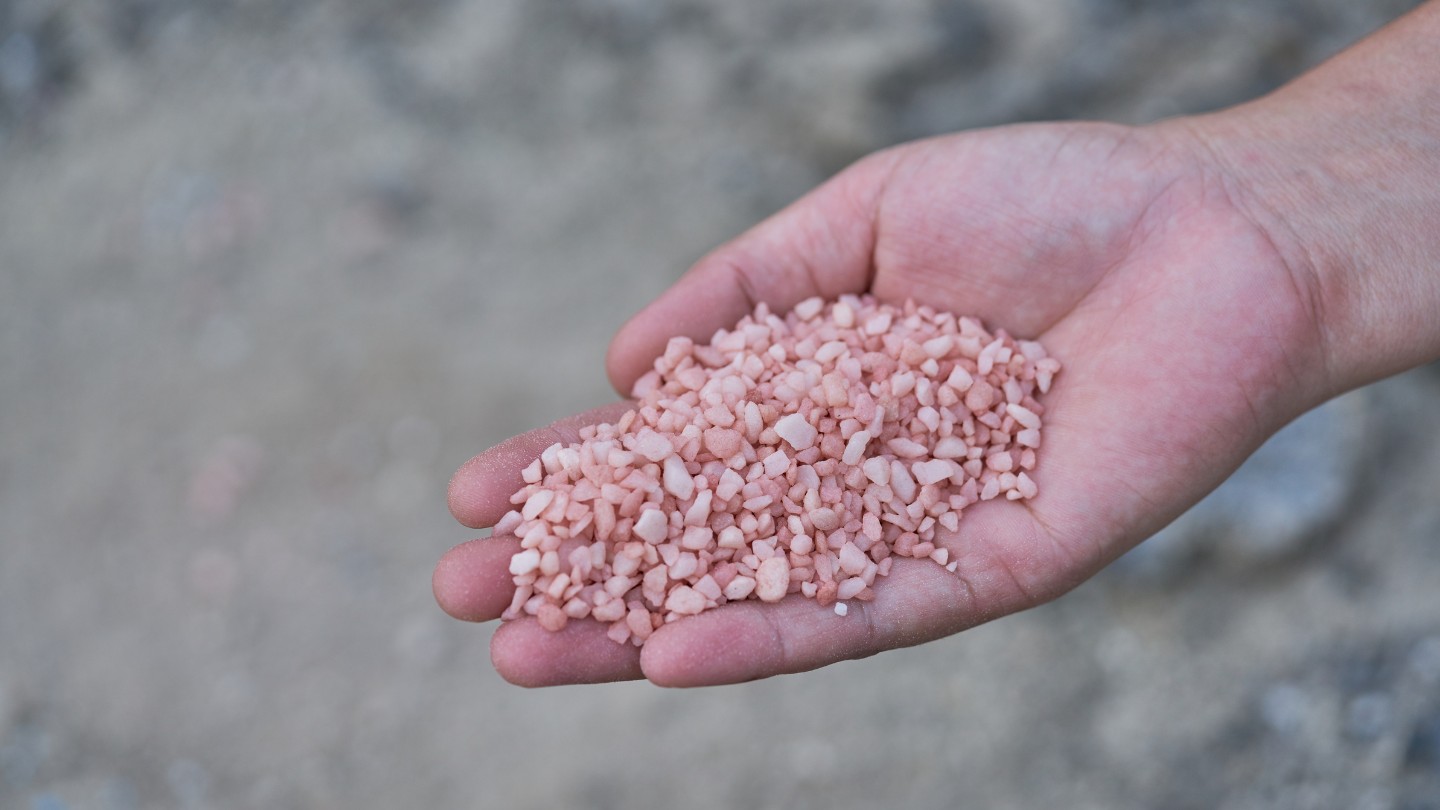

Articles
15 Best Potash Fertilizer 0-0-60 for 2025
Modified: June 9, 2025
Looking for the best potash fertilizer 0-0-60 for 2025? Discover the top 15 options to maximize your crop yield and nutrient balance.
(Many of the links in this article redirect to a specific reviewed product. Your purchase of these products through affiliate links helps to generate commission for Storables.com, at no extra cost. Learn more)
Are you a farmer or gardener looking for the best potash fertilizer for the upcoming year? Look no further, as we have compiled a list of the 15 best potash fertilizers with a perfect 0-0-60 ratio for 2025. Potash fertilizer, with its high potassium content, plays a crucial role in promoting healthy plant growth and increasing yield. Our experts have extensively researched and tested various brands to bring you the top choices available in the market. With this comprehensive guide, you can make an informed decision and ensure optimum nutrient balance for your crops or garden.
Overall Score: 9/10
Jobe's Fertilizer Spikes are the ideal solution for feeding trees and shrubs. They provide a slow-release of nutrients, ensuring your plants receive a steady supply of food throughout the season. With easy-to-use spikes, there's no mess or wasteful runoff. Simply insert them around the plant's dripline, and they'll deliver the perfect amount of nutrients directly to the roots. Whether you have a large or small garden, Jobe's offers various quantities to suit your needs. These spikes are formulated for different types of trees and shrubs, including deciduous trees, hydrangeas, honeysuckle, dogwood, and hibiscus. Give your plants the nourishment they need with Jobe's Fertilizer Spikes.
Key Features
- Ideal fertilizer spike for trees and shrubs
- Slow release for continuous nourishment
- Easy-to-use without wasteful runoff
- Available in various quantities
- Formulated for different types of plants
Specifications
- Color: Green
- Dimension: 1.00Lx5.00Wx7.00H
- Size: 5 Spikes
Pros
- Easy to use
- Affordable
- Effective in producing blossoms
- Provides steady nutrients all season long
- Suitable for various plants
Cons
- May be difficult to insert in hard soil
- Limited effectiveness in heavy clay soil
Jobe’s Fertilizer Spikes offer a convenient and reliable solution for maintaining healthy trees and shrubs. With their slow-release formula and easy application, these spikes make it effortless to provide the necessary nutrients to your plants. They have garnered positive reviews from users who have witnessed the significant impact on their plants’ growth and health. While some may experience challenges in hard or clay soil, overall, Jobe’s Fertilizer Spikes are a reliable choice for any gardener. Whether you’re a seasoned pro or just starting your gardening journey, these spikes are a reliable and effective companion for your plants.
Overall Score: 9.2/10
Simple Lawn Solutions – High Potassium Lawn Food Liquid Fertilizer 0-0-25 is a concentrated spray that promotes turf grass vigor and plant hardiness. It is designed to help lawns prepare for temperature changes and stressful conditions, making them more resistant to stress. This lawn fertilizer treats potassium deficiency and enhances the plant's endurance to stress. It is easy to use with a ready-to-use hose end sprayer that applies the perfect ratio of liquid nutrients for lawn applications. The fertilizer covers up to 3,200 square feet, making it suitable for any grass type. Manufactured in the USA, this product comes from a family-owned business with over 25 years of experience in the turf and agriculture industry.
Key Features
- Plant Hardiness: Potassium Promotes Turf Grass Hardiness
- High Potassium Lawn Food Fertilizer: Treats Potassium Deficiency
- Easy to Use: Includes a ready-to-use hose end sprayer
- Produced In The U.S.A: Manufactured in the USA
- Can Be Used On Any Grass type
Specifications
- Dimension: 5.50Lx3.00Wx9.00H
- Size: 32 ounce
Pros
- Promotes turf grass hardiness
- Enhances plant endurance to stress
- Easy to apply with hose end sprayer
- Covers up to 3,200 square feet
Cons
- Some customers received a broken spray nozzle
With its high potassium content, the Simple Lawn Solutions High Potassium Lawn Food Liquid Fertilizer is a reliable product to enhance the hardiness and endurance of your turf grass. It is easy to use and covers a significant area with its hose end sprayer. Customers have reported excellent results in terms of greening their lawns and boosting their overall health. However, some customers have received damaged spray nozzles, which may affect the ease of application. Overall, this product is a valuable addition to any lawn care routine and comes highly recommended for DIY enthusiasts.
Overall Score: 8.5/10
Burpee Bone Meal Fertilizer is a natural source of organic nitrogen, phosphorus, and calcium that promotes strong root development and enhances plant growth. OMRI listed for organic gardening, this fertilizer is ideal for new bedding plants, flower gardens, and fall bulb planting. It is 100% guaranteed and made in the USA. With a fine granular consistency, it is easy to spread and works well in potting mixes. While it may not be the best for seed starting due to its tendency to dry out quickly, it is highly effective for overall plant nutrition. Use it as instructed to see a noticeable difference in the growth and vitality of your plants.
Key Features
- Promotes strong root development
- OMRI listed for organic gardening
- Ideal for new bedding plants and fall bulb planting
- Fine granular consistency for easy spreading
- Made in the USA
Specifications
- Color: Bone Meal (3lbs)
- Dimension: 4.00Lx10.25Wx12.50H
- Size: 1 Pack
Pros
- Promotes robust plant growth
- Certified organic for gardening
- Naturally deters rabbits from garden
- Ideal for fall bulb planting
- Made in the USA
Cons
- May dry out too quickly for seed starting
- Doesn't contain added fertilizers
Burpee Bone Meal Fertilizer is a high-quality organic fertilizer that promotes strong root development and overall plant growth. While it may not be the best choice for seed starting, it is highly effective for bedding plants, flower gardens, and fall bulb planting. Made in the USA and certified organic, it offers gardeners a natural and reliable option for enhancing the health and vitality of their plants. With a granular consistency, it is easy to apply and provides long-lasting nutrition. If you’re looking for a trustworthy and effective fertilizer to support your plants, Burpee Bone Meal Fertilizer is definitely worth considering.
Overall Score: 8/10
The Superior 15-0-15 Liquid Fertilizer Nitrogen & Potash Lawn Food is a concentrated spray that is suitable for any grass type. With a 15-0-15 nutrient ratio and no phosphorus, it provides the ideal choice for maintaining a healthy lawn and addressing nitrogen and potassium deficiencies. This liquid lawn fertilizer combines the power of nitrogen and potassium blended with high-quality humic acid, promoting green and robust growth while providing essential nutrients for turf hardiness. The fertilizer is easy to use with its attached sprayer and can be applied to all grass types, including Bermuda, St. Augustine, Zoysia, Buffalo, Centipede, Palmetto, and Bluegrass. It can be used alongside your current fertilizer program as a supplement for quick plant uptake. Made in the United States, the Superior 15-0-15 Liquid Fertilizer is produced by a family-owned business with extensive experience in the turf industry.
Key Features
- Liquid Lawn Fertilizer with 15-0-15 nutrient ratio
- Power of Nitrogen & Potassium blended with Humic Acid
- Blended with 15% Nitrogen for vigorous growth
- Contains 15% Potassium for plant endurance
- Blended with highest quality Humic Acid
- Attached easy-to-use sprayer for convenient application
- Can be used on all grass types
- Suitable as a supplement to granular fertilizer program
- Produced in the United States by a trusted family-owned business
Specifications
- Dimension: 5.50Lx3.00Wx9.00H
- Size: 32 Ounce
Pros
- Ideal for maintaining a healthy lawn
- Promotes green and robust growth
- Convenient attached sprayer
- Suitable for all grass types
- Can be used with existing fertilizer program
- Produced in the United States
Cons
- Spray bottle may not work for everyone
- Some users may experience difficulties in application
The Superior 15-0-15 Liquid Fertilizer Nitrogen & Potash Lawn Food is a highly effective product for maintaining a healthy and vibrant lawn. With its balanced nutrient ratio, high-quality humic acid, and convenient attached sprayer, it provides an easy and efficient solution for addressing nitrogen and potassium deficiencies in any grass type. Users praise its performance, noting significant improvements in the growth and appearance of their lawns. The product’s compatibility with existing fertilizer programs and its production in the United States by a trusted family-owned business further add to its appeal. Although some customers have experienced minor issues with the spray bottle, the overall consensus is positive. For those seeking an effective liquid fertilizer for their lawns, the Superior 15-0-15 is a top choice.
Overall Score: 9/10
The 7-0-20 Summer Lawn and Turf Stress Granular Fertilizer Blend is a high-quality fertilizer that offers great results for your lawn. It is a 45lb bag that covers 15,000 square feet, providing ample coverage for a healthy and vibrant lawn. With a blend of 7% nitrogen, 3% iron, and 20% potash, it helps to promote a hearty pop of color and offers sweet relief for a stressed lawn. The fertilizer also contains Bio-Nite, enhancing its effectiveness. It can be applied all year round, making it a versatile choice for lawn care. Overall, it is a highly rated product that delivers impressive results for lawns in need of nourishment and rejuvenation.
Key Features
- Covers 6,000 sq ft (18 lb) – OR – 15,000 sq ft (45 lb)
- Contains 3% Iron + Bio-Nite
- Analysis is 7-0-20:: N-P-K
- Great for a hearty pop of color and sweet relief for a stressed lawn
Specifications
- Size: 45 lbs
Pros
- Provides impressive results even after a hot summer
- Customizable to meet your lawn's specific needs
- Ample coverage for a healthy and vibrant lawn
- Can be applied all year round
Cons
- Coverage accuracy may vary
- May require additional fertilizer for larger lawns
The 7-0-20 Summer Lawn and Turf Stress Granular Fertilizer Blend is a highly recommended product for achieving a healthy and vibrant lawn. Its impressive results, even in challenging conditions, make it a reliable choice for homeowners. The customizable nature of this fertilizer allows it to cater to the specific needs of your lawn, ensuring optimal nourishment and growth. While coverage accuracy may vary, the ample coverage provided is suitable for most lawns. The ability to apply the fertilizer all year round adds to its versatility. Overall, this fertilizer offers outstanding value for money and is a must-have for anyone looking to improve the health and appearance of their lawn.
Overall Score: 8/10
The Muriate of Potash 0-0-60 Fertilizer by Cz Garden is a premium quality, water soluble phosphate fertilizer that promotes bigger blooms in home gardens. It is suitable for all indoor/outdoor flowers, lawns, and garden vegetables. The fertilizer comes in a 5lb resealable pouch, making it easy to pour and store for future use. Manufactured in the USA, this fertilizer is made from high-quality ingredients, ensuring excellent results in your organic garden. With a customer rating of 4.6/5, this product has received positive reviews for its efficacy in enhancing plant growth. Whether you're growing tomatoes, cacti, succulents, or any other plants that require improved root development, this Muriate of Potash fertilizer is a great choice.
Key Features
- Premium quality ingredients
- Powerful potassium fertilizer
- Resealable, Easy pour packaging
- Country of origin: Usa
- Committed to organics
Specifications
- Size: Cz Garden Organics Muriate of Potash 5LB
Pros
- Premium quality ingredients
- Promotes bigger blooms
- Resealable and easy pour packaging
- Manufactured in the USA
- Committed to organic gardening
Cons
- Mixed reviews on effectiveness
- Some users experienced negative outcomes
- May require following instructions carefully
The Muriate of Potash 0-0-60 Fertilizer is a reliable option to enhance plant growth and promote bigger blooms in your garden. With its premium quality ingredients, easy pour packaging, and commitment to organic gardening, this fertilizer delivers promising results. However, it is important to follow the instructions carefully to ensure desired outcomes. Some users have reported mixed experiences with this product, so it might be worth considering other alternatives if you’ve had unsatisfactory results with similar fertilizers in the past. Overall, this Muriate of Potash fertilizer has garnered positive feedback and is a recommended choice for those looking to enrich their indoor/outdoor plants and organic gardens.
Overall Score: 8.5/10
The All-Natural Muriate of Potash is a premium potassium-rich fertilizer, perfect for promoting root growth and healthy fruit development in both indoor and outdoor plants, gardens, lawns, and trees. With a potent 0-0-60 analysis, this fertilizer provides just the right balance of potassium nutrients for optimal plant growth. The 5-pound size ensures that you have enough to cover a significant area. This granular potassium fertilizer is ideal for areas where potassium deficiency has been identified through soil testing. However, it's important to note that it should not be used on acid-loving plants. Overall, the All-Natural Muriate of Potash is a highly effective and efficient potassium fertilizer that will help your plants thrive.
Key Features
- Potassium rich fertilizer for indoor and outdoor plants
- Promotes root growth and healthy fruit development
- Great for lawns and gardens
- Key nutrient for strong stalks, roots, and fruit
- Efficient 0-0-60 analysis provides what plants need
Specifications
- Size: 5 Pounds
Pros
- Economical with small amount required
- Fixes tomato ripeness issues
- Effective in helping potatoes grow
- Easy to spread and use
- Water soluble for convenient application
Cons
- Granules may not spread evenly with other products
- Not suitable for acid-loving plants
The All-Natural Muriate of Potash is an excellent choice for gardeners and plant enthusiasts looking to provide their indoor and outdoor plants with the necessary potassium nutrients. With its efficient 0-0-60 analysis, this premium fertilizer promotes robust root growth and fruitful development. While it may not be ideal for acid-loving plants, it offers great value for money and is easy to use. Whether you’re looking to enhance the growth of your fruit trees, plants, or vegetables, this potassium fertilizer has got you covered. Say goodbye to yellowing leaves and weak stalks, and welcome healthier, thriving plants with the All-Natural Muriate of Potash.
Overall Score: 8/10
The Hi-Yield Muriate of Potash 0-0-60 is a potassium plant supplement designed to promote healthier stems, roots, and tubers in plants. It is particularly beneficial for plants like tulips, carrots, potatoes, and other rooting subterranean plants. This product should not be directly applied to roots but mixed into the soil and watered thoroughly. With a 4-pound pack, you can treat up to 800 square feet of ground. The recommended application rate is 0.5 pounds per 100 square feet of soil. Customers have praised its effectiveness and fast shipping. However, some users have not seen desired results yet. Overall, the Hi-Yield Muriate of Potash 0-0-60 is a reliable and necessary fertilizer for organic gardening.
Key Features
- Helps plants form healthier stems, roots, and tubers
- Ideal for tulips, carrots, potatoes, and other rooting plants
- Do not apply directly to roots, mix into soil
- 4 pounds can treat 800 square feet of ground
- Apply at a rate of 0.5 pounds per 100 square feet
Specifications
- Dimension: 4.00Lx6.50Wx12.50H
- Size: 1
Pros
- Effectiveness as advertised
- Easy application with clear instructions
- Specific fertilizer not easily found in stores
- Fast shipping and quality packaging
- Exceeds expectations in increasing mango production
- Reliable product for organic gardening
Cons
- No immediate visible results for some users
- Potential to burn plants if not mixed well
The Hi-Yield Muriate of Potash 0-0-60 is a valuable potassium plant supplement for enhanced growth in various plants. It offers great benefits for plant health and organic gardening. The majority of customers have found it to be effective, with some even experiencing exceptional results. Although some users haven’t seen immediate outcomes, this product remains a reliable choice. The fast shipping and ease of application make it a convenient option for avid gardeners. With its proven effectiveness and long-lasting impact, the Hi-Yield Muriate of Potash 0-0-60 is definitely worth considering for anyone looking to improve the health and productivity of their plants.
Overall Score: 9/10
The Yard Mastery 0-0-48 Granular Fertilizer Sulfate of Potash is a fantastic product designed to enhance the health and beauty of your lawn. With its low salt formula, this fertilizer will not burn your lawn and provides slow-release nutrients to promote steady growth. It covers up to 8,000 square feet, making it suitable for large lawns. The potash included in this formula helps improve soil quality and aids in enhancing the overall health of your grass. Customers have praised this product for its effectiveness and affordability. It is easy to apply and delivers excellent results. With Yard Mastery's Granular Fertilizer Sulfate of Potash, you can achieve a lush and vibrant lawn you can be proud of.
Key Features
- Enhances the health and beauty of your lawn
- Low salt formula, will not burn your lawn
- Slow-release nutrients for steady growth
- Covers 8,000 square feet of lawn
- Improves soil quality and overall grass health
- Easy to apply
Specifications
Pros
- Affordable price
- Effective in enhancing lawn
- Easy to apply
Cons
Yard Mastery’s Granular Fertilizer Sulfate of Potash is a highly recommended product for anyone looking to improve the quality of their lawn. With its low salt formula and slow-release nutrients, it ensures a healthier and greener lawn without the risk of burning. Customers have praised its effectiveness and affordability, making it a great option for lawn care enthusiasts. Whether you have a small or large lawn, this fertilizer provides excellent coverage and delivers impressive results. Say goodbye to patchy, unhealthy grass and say hello to a lush and vibrant lawn with Yard Mastery’s Granular Fertilizer Sulfate of Potash.
Overall Score: 8/10
Cz Garden Sulfate of Potash is a premium quality fertilizer made in the USA. It is a high-purity, high-potassium fertilizer that enhances the color, texture, and taste of crops. It is designed to boost the healthy development of all indoor/outdoor flowers, fruits, and vegetables. The pH neutral fine powder is water-soluble and can be used in various applications. It is a rich source of potassium and sulfur, strengthens plant stalks, corrects deficiencies, and promotes bigger blooms and increased crop yields. With less than 0.5% chlorine content, it is ideal for sensitive crops. The resealable, easy-pour packaging makes it convenient to use and store for future use. Cz Garden Organics is committed to developing premium grade custom soil amendment blends, fertilizers, and nutrients for organic gardens.
Key Features
- Premium quality ingredients
- Water-soluble p H neutral powder
- Rich source of potassium and sulfur
- Low chlorine content
- Resealable, easy-pour packaging
- Made in the USA
- Developed by Cz Garden Organics
Specifications
Pros
- Enhances crop color, texture, and taste
- Can be used in various applications
- Strengthens plant stalks and improves overall plant health
- Ideal for sensitive crops
- Convenient resealable packaging
- Made in the USA
Cons
- Water-soluble powder may wash away after rain/waterings
- Not suitable for all-purpose fertilization
- Mixed results on different plants
Cz Garden Sulfate of Potash is a high-quality fertilizer that delivers on its promises. With its premium ingredients and water-soluble pH neutral powder, it is versatile and easy to use. The low chlorine content makes it suitable for sensitive crops, and the resealable packaging ensures convenience and long-term storage. While there may be mixed results on different plants, the overall feedback from customers is positive, with many seeing great results on their crops. Whether you have indoor or outdoor flowers, fruits, or vegetables, this fertilizer can enhance their color, texture, and taste. Developed by Cz Garden Organics, a trusted brand committed to organic gardening, you can buy with confidence knowing you’re getting a reliable product. Give your plants the boost they need with Cz Garden Sulfate of Potash!
Overall Score: 9/10
The Potassium Chloride 0-0-62 Fertilizer by Greenway Biotech Brand contains 62% potassium in the form of Muriate of Potash, providing a concentrated source of this essential nutrient. It promotes root growth, regulates plant metabolism, and affects water pressure regulation. The fertilizer is 100% water-soluble, making it suitable for easy application and effective absorption by plants. It comes in a size of 3 pounds and has received a customer rating of 4.6/5.
Key Features
- High potassium content of 62%
- Promotes root growth
- Regulates plant metabolism
- 100% water-soluble
- Affects water pressure regulation
Specifications
- Size: 3 Pounds
Pros
- Concentrated source of potassium
- Stimulates root development
- Improves overall plant growth and development
- Easy to apply
- Effective absorption by plants
- Helps plants withstand drought conditions
- Suitable for various irrigation methods
Cons
- No spreader settings provided on the bag
- Not as soluble as desired for larger areas
The Potassium Chloride 0-0-62 Fertilizer is a highly concentrated source of potassium that promotes root growth and improves overall plant health. It is easy to apply and can be quickly absorbed by plants due to its water-soluble nature. The fertilizer helps plants withstand drought conditions by regulating water movement. However, it lacks spreader settings on the packaging and may not be as soluble for larger areas. Overall, it is a great choice for lawn and agricultural applications.
Overall Score: 8.5/10
Boost your plants' defense system with 0-0-26 Foliar Phosphite Liquid Fertilizer. This foliage phosphite liquid fertilizer provides key nutrients during times of high stress. It helps improve drought tolerance and root growth, making it perfect for ornamentals and turf. The easy measure and pour bottle allows precise dosage. Simply mix the fertilizer with water, apply generously to plants every two weeks for ornamentals and every 2-4 weeks for turf. Derived from potassium hydroxide and phosphorus acid, this fertilizer contains 26% soluble potash (K2O). Give your plants a burst of energy and see the results in just a few days. Highly recommended for all your gardening needs!
Key Features
- Boosts plants' defense system during high stress
- Provides key nutrients for improved drought tolerance and root growth
- Easy measure and pour bottle for precise dosage
- Suitable for ornamentals and turf
- Contains 26% soluble potash (K2O)
Specifications
- Color: Clear
- Size: 32 oz.
Pros
- Effective in improving plant health and growth
- Easy to measure and pour with the bottle
- Can see noticeable results in a short period of time
- Suitable for both ornamentals and turf
Cons
- Some packaging may arrive damaged
- Leaks reported in a few cases
If you’re looking to enhance the health and growth of your plants, 0-0-26 Foliar Phosphite Liquid Fertilizer is a reliable choice. With its high soluble potash content and key nutrients, it helps build your plants’ defense system and improves their ability to withstand stress. The easy measure and pour bottle ensures accurate dosage, making it convenient to use. While there have been some reports of packaging issues, the effectiveness of this fertilizer in promoting drought tolerance and root growth makes it highly recommended. Give your plants the boost they need and witness remarkable results in no time!
Overall Score: 9/10
Enhance the growth of your plants with the 50lb Bag Organic Solution Grade Sulfate of Potassium Fertilizer Powder. This high-quality fertilizer is perfect for home gardening and hydroponics. The ultra-fine solution grade powder is easily soluble and ensures quick absorption by plants. With primary elements of 52% potash (K2O) and 18% sulfate (SO4), it promotes blooming and fruiting. The bag contains 50 pounds of the fertilizer, making it suitable for larger gardens or multiple applications. The reliable Seed Supply company offers fast shipping, a great selection of organic products, and exceptional customer service. However, note that this fertilizer is in powder form and may require dilution for spreading.
Key Features
- Sulfate of Potash 0-0-50
- Ultra Fine Solution Grade Powder, Minus 200 Mesh
- Primary elements are 52% potash (K2O) and 18% sulfate (SO4).
Specifications
- Size: 1 Bag
Pros
- Ideal for home gardening
- Suitable for hydroponics
- Promotes blooming and fruiting
- Quickly dissolves in water
- Fast shipping from reliable company
Cons
- Powder form may require dilution for spreading
- Not suitable for use on grounds without dilution methods
If you’re looking for an effective potassium fertilizer for your plants, the 50lb Bag Organic Solution Grade Sulfate of Potassium Fertilizer Powder is a fantastic choice. It offers excellent value with its high potash and sulfate content, ensuring enhanced blooming and fruiting. The fertilizer’s ultra-fine powder form makes it easy to dissolve and absorb by plants. However, keep in mind that this product may need to be diluted before spreading. With the reliable Seed Supply company providing fast shipping and organic products, you can trust in both their quality and customer service. Give your plants the nutrient boost they need with this top-grade fertilizer.
Overall Score: 8/10
10 Pounds – Potassium Sulfate – Sulfate of Potash is a great source of potassium and sulfur for your plants. It comes in a resealable bag that is sealed for safety and freshness. With a tear-off tab for easy opening, this product is convenient to use and store. Whether you need to amend your soil or feed your garden, this potassium sulfate is an excellent choice. It is highly refined and easy to apply, ensuring that your plants receive the necessary nutrients. With its high customer rating and positive reviews, this product is trusted by many gardeners and landscapers.
Key Features
- A good source of potassium and sulfur
- Shipped in a resealable bag that is sealed for safety and freshness
- Includes a tear-off tab for easy opening
Specifications
- N/A
Pros
- Highly refined and easy to apply
- Convenient resealable bag for storage
- Good source of potassium and sulfur
- Positive customer reviews
- Trusted by many gardeners and landscapers
Cons
- Some impurities reported by a few customers
- One customer mentioned not to overuse
10 Pounds – Potassium Sulfate – Sulfate of Potash is a reliable product for anyone looking to improve their soil or feed their plants. Its highly refined nature makes it easy to apply, and the resealable bag ensures its freshness and convenience. The positive customer reviews and high rating are indicative of its effectiveness and reliability. However, a few customers reported some impurities, and one customer mentioned the importance of not overusing it. Overall, this product is recommended for gardeners and landscapers who want a trusted source of potassium and sulfur for their plants.
Overall Score: 8.5/10
Promote a lush, green lawn with the 25 lb. Lawn Food Fertilizer. This family-friendly fertilizer contains no harsh ingredients, manure, or biosolids, making it safe to use. It conveniently allows re-entry without any restrictions on time. With its high-quality formula, it effectively greens up the grass and provides excellent results. The 25-pound bag is perfect for treating your lawn, ensuring it receives the necessary nutrients for healthy growth. Whether you have a small or large lawn, this fertilizer spreads evenly and efficiently. It is also organic, making it an excellent choice for those who prefer natural products. Give your lawn the care it deserves with this top-quality lawn food fertilizer.
Key Features
- No Harsh Ingredients, No Manure, No Biosolids
- Promotes a Lush, Green Lawn
- Convenient and Family Friendly- No Restrictions on Re-Entry Time
- Image may vary
Specifications
- Dimension: 15.00Lx3.00Wx20.00H
- Size: 25 Pounds
Pros
- Safe to use with no harsh ingredients
- Promotes lush and green lawn
- Convenient with no restrictions on re-entry time
- Spreads evenly and efficiently
Cons
- Not an overnight green-up type fertilizer
- Visual difference may take time to appear
With its high-quality formula and family-friendly features, the 25 lb. Lawn Food Fertilizer is an excellent choice for maintaining a lush, green lawn. Its organic composition and absence of harsh ingredients make it safe to use, while its effective nutrients ensure substantial grass growth. Although visual results may take time, this slow and steady fertilizer is worth the wait. Its convenience, even spreading, and economical usage make it an ideal solution for both small and large lawns. Whether you’re a gardening enthusiast or a casual homeowner, this top-quality fertilizer will provide astonishing growth and excellent results for your lawn.
Buyer's Guide: Potash Fertilizer 0-0-60
Looking to boost the health and productivity of your plants? Potash fertilizer 0-0-60 might be just what you need! Packed with essential nutrients, potash fertilizer can help your plants grow stronger, produce more flowers or fruits, and resist diseases. To ensure you make an informed decision, here's a buyer's guide to everything you need to know about potash fertilizer 0-0-60:1. Understand the Basics:
- Potash fertilizer is a type of fertilizer that is rich in potassium (K) and contains no nitrogen (N) or phosphorus (P).
- The numbers 0-0-60 on the label refer to the percentages of nitrogen, phosphorus, and potassium present in the fertilizer respectively.
- The high potassium content makes potash fertilizer suitable for crops that require elevated levels of this nutrient, such as fruits, vegetables, flowers, and certain trees.
2. Benefits of Potash Fertilizer:
- Enhances plant growth and improves overall plant health.
- Strengthens plants' resistance to diseases, pests, and harsh environmental conditions.
- Helps in the development of larger, healthier roots, and enhances fruit or flower production.
- Improves the quality and taste of harvested crops.
3. Application Methods:
- Broadcast Application: Sprinkle the potash fertilizer evenly across the soil surface and incorporate it by raking or lightly tilling the area.
- Side-Dressing: Apply the fertilizer in a band next to the plant's root zone, keeping it away from direct contact with the stems or leaves.
- Foliar Application: Mix the potash fertilizer with water and spray the solution directly onto the plant leaves. This method is best for quick nutrient uptake and addressing severe potassium deficiencies.
- Soil Incorporation: Mix the potash fertilizer into the soil before planting to ensure an even distribution of nutrients.
4. Considerations When Buying Potash Fertilizer:
- Nutrient Content: Check the label to ensure that the potash fertilizer has a guaranteed analysis of 0-0-60 and contains no additional unwanted elements.
- Water Solubility: Some potash fertilizers are water-soluble, allowing for easy absorption by plants. However, remember that excessive use of soluble potash fertilizers in sandy soils may lead to leaching.
- Organic or Synthetic: Potash fertilizers are available in both organic and synthetic forms. Choose the type that aligns with your gardening preferences and objectives.
- Granular or Liquid: Potash fertilizers come in granular or liquid forms. Select the appropriate form based on your desired application method and convenience.
5. Safety Precautions:
- Read the instructions and safety guidelines provided by the manufacturer before using any potash fertilizer.
- Wear appropriate protective gear, such as gloves and goggles, when handling and applying the fertilizer.
- Store potash fertilizer in a safe place away from children, pets, and combustible materials.
- Avoid over-application, as excessive potassium levels can disrupt nutrient balances and harm plants.
Read also: 11 Amazing 15-0-15 Fertilizer for 2025
Frequently Asked Questions about 15 Best Potash Fertilizer 0-0-60 For 2025
While potash fertilizer can benefit a wide range of plants, it is particularly beneficial for fruits, vegetables, flowers, and certain trees that require higher potassium levels.
Potash fertilizer can be used alone to provide plants with potassium. However, it is essential to consider the specific nutritional needs of your plants and ensure a balanced fertilizer regime.
The frequency of application depends on factors like soil conditions, plant type, and the level of potassium deficiency. As a general guideline, potash fertilizer may be applied once or twice during the growing season, following the recommended application rates.
Yes, there are several other potash fertilizers available in varying ratios. These ratios indicate the relative amounts of nitrogen, phosphorus, and potassium in the fertilizer. Choose one that suits the specific needs of your plants.
Overuse of potash fertilizer can disturb nutrient balances, leading to deficiencies in other essential elements. It is crucial to follow the recommended application rates and conduct soil tests to avoid over-application.
Was this page helpful?
Trust Storables.com for unbiased and honest product reviews. Our reviews are rigorously assessed by our Expert Board Contributors and adhere to strict Editorial Standards. We ensure that each review is transparent and trustworthy, helping you make informed purchasing decisions.
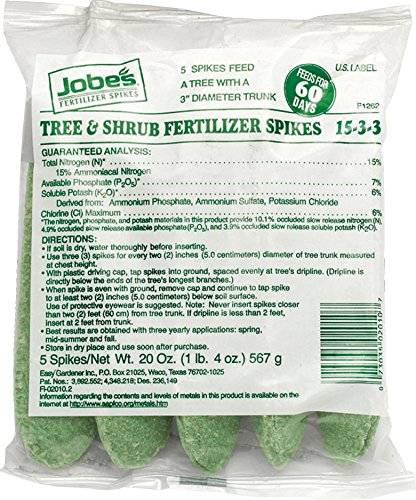
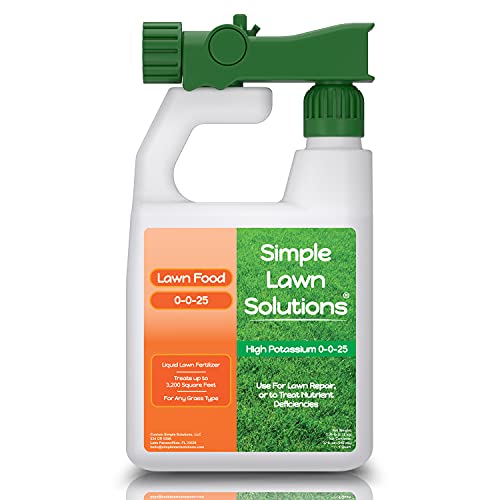
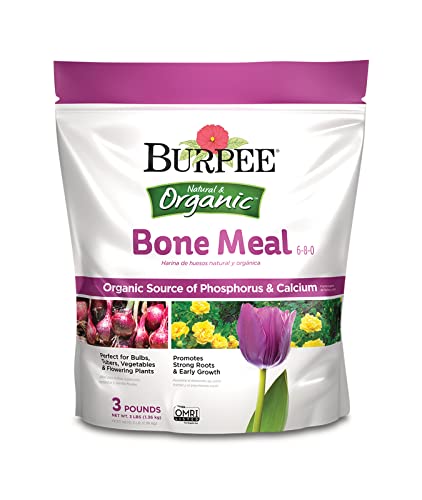
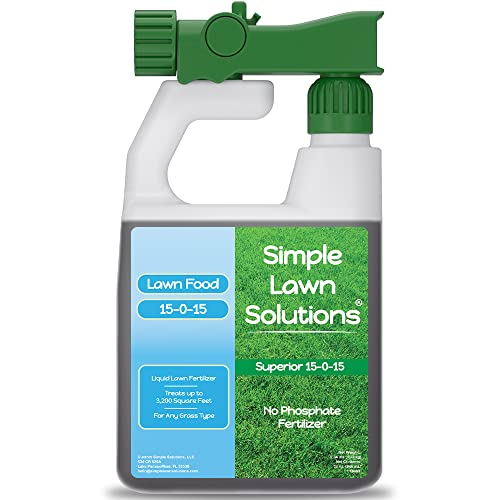
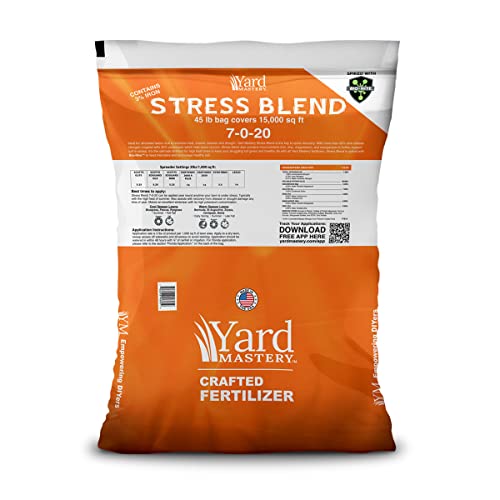
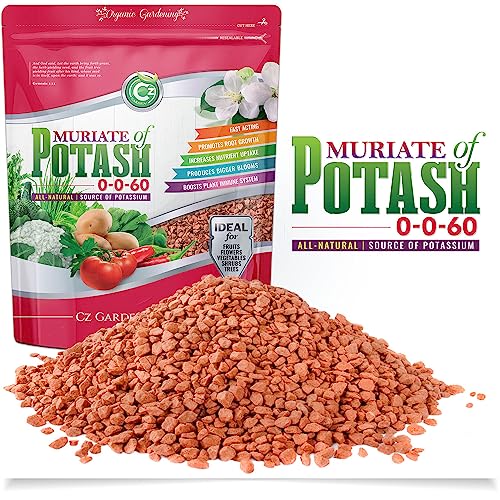
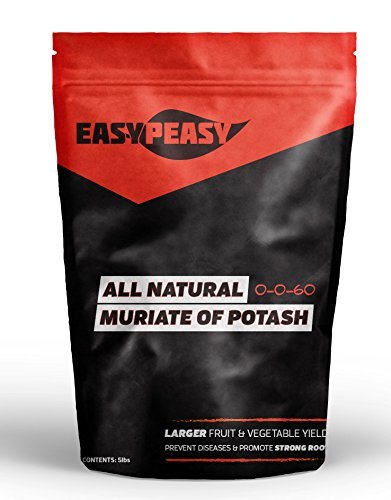
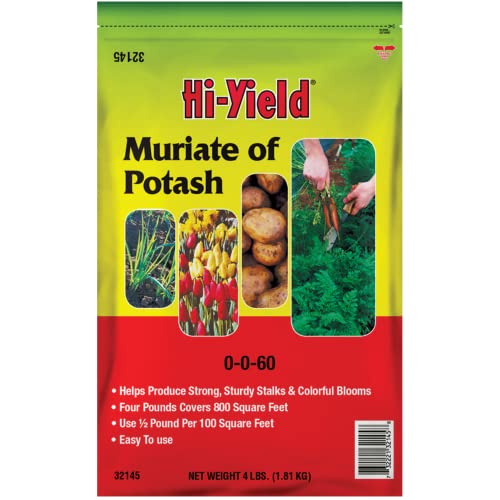
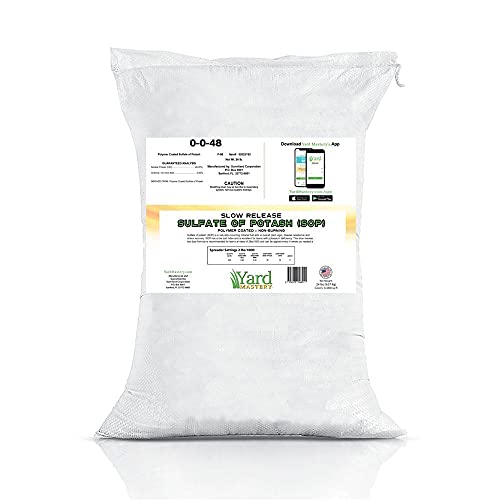
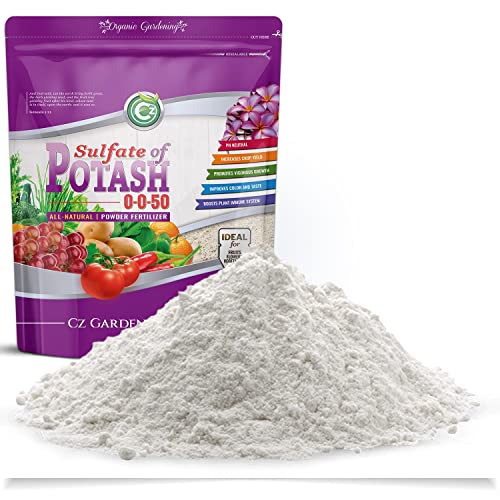
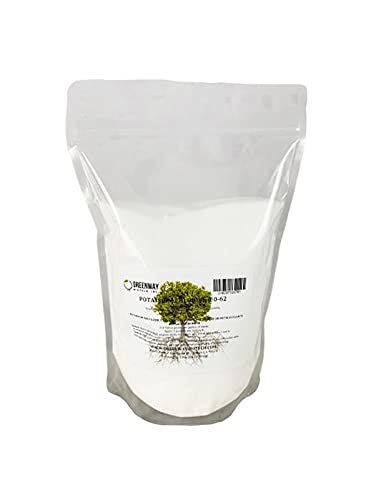
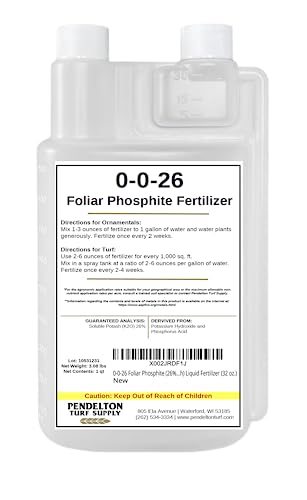
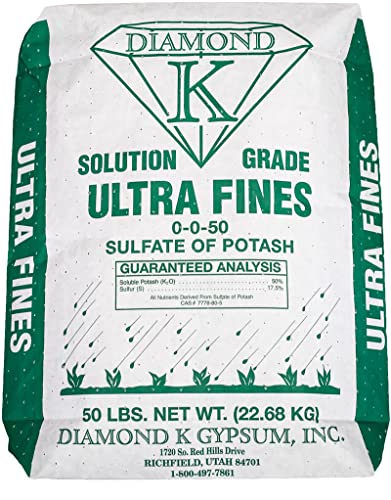
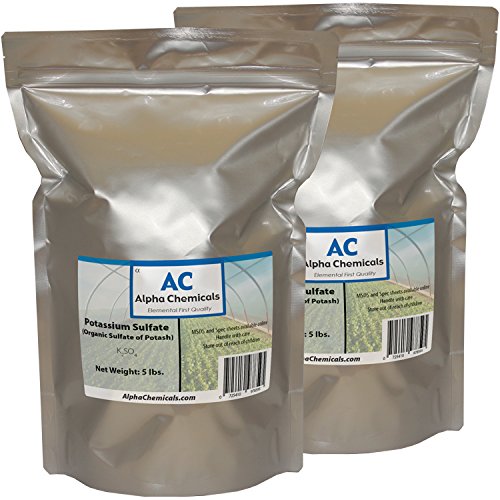
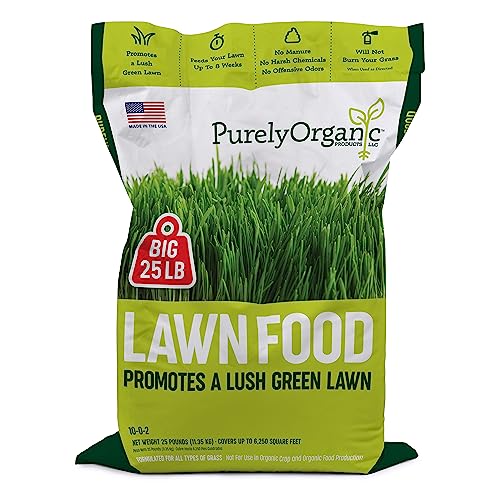
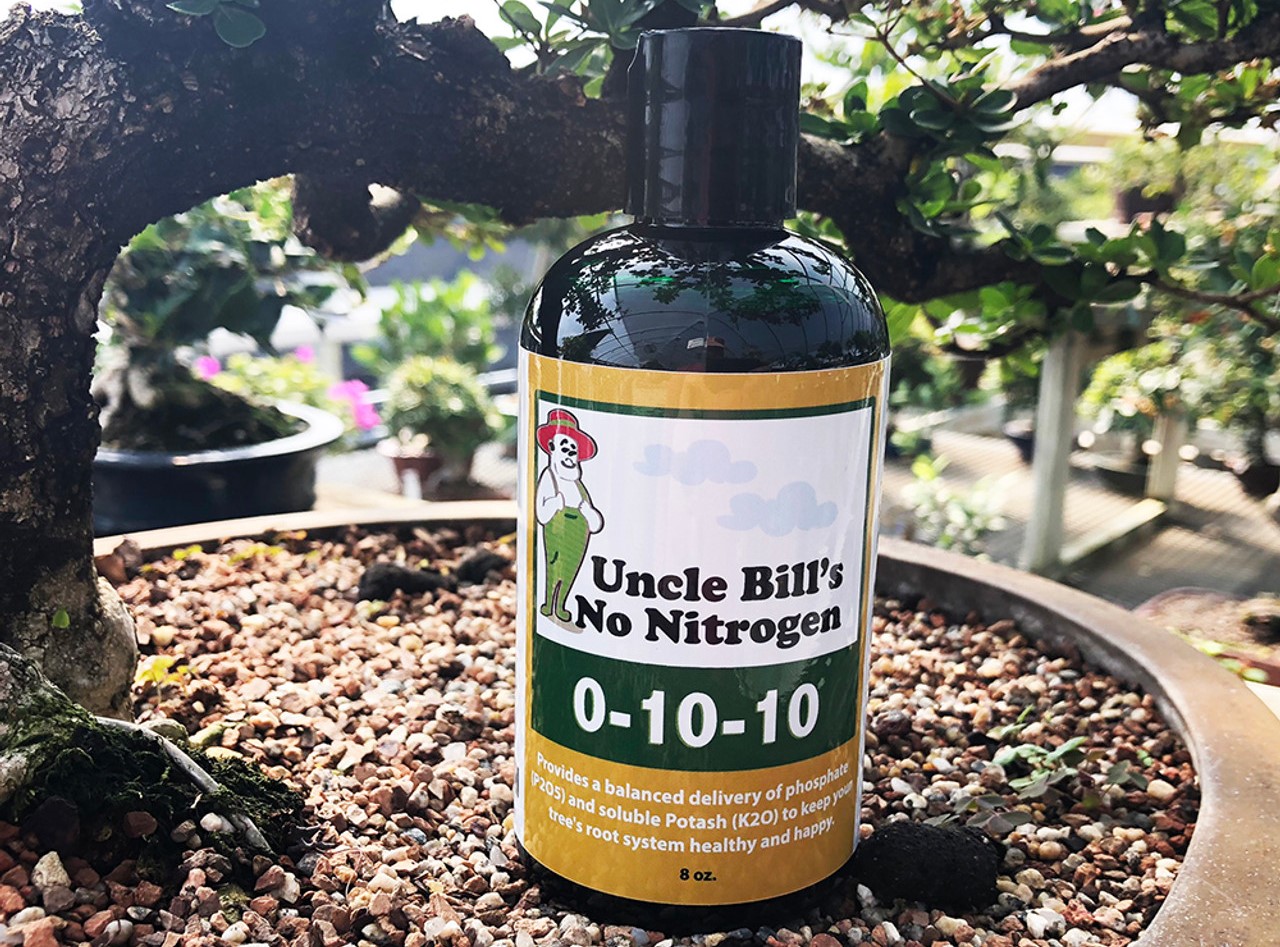

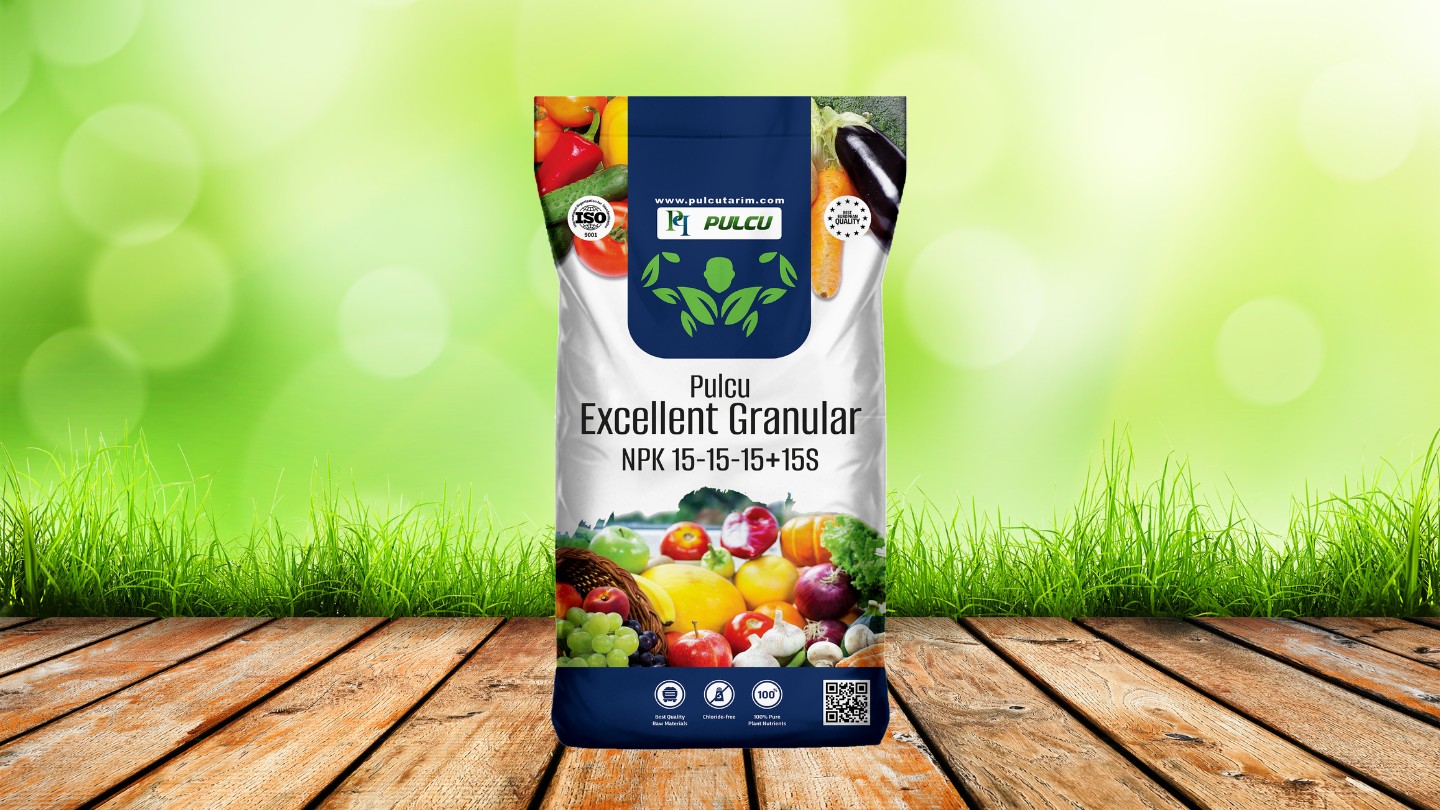

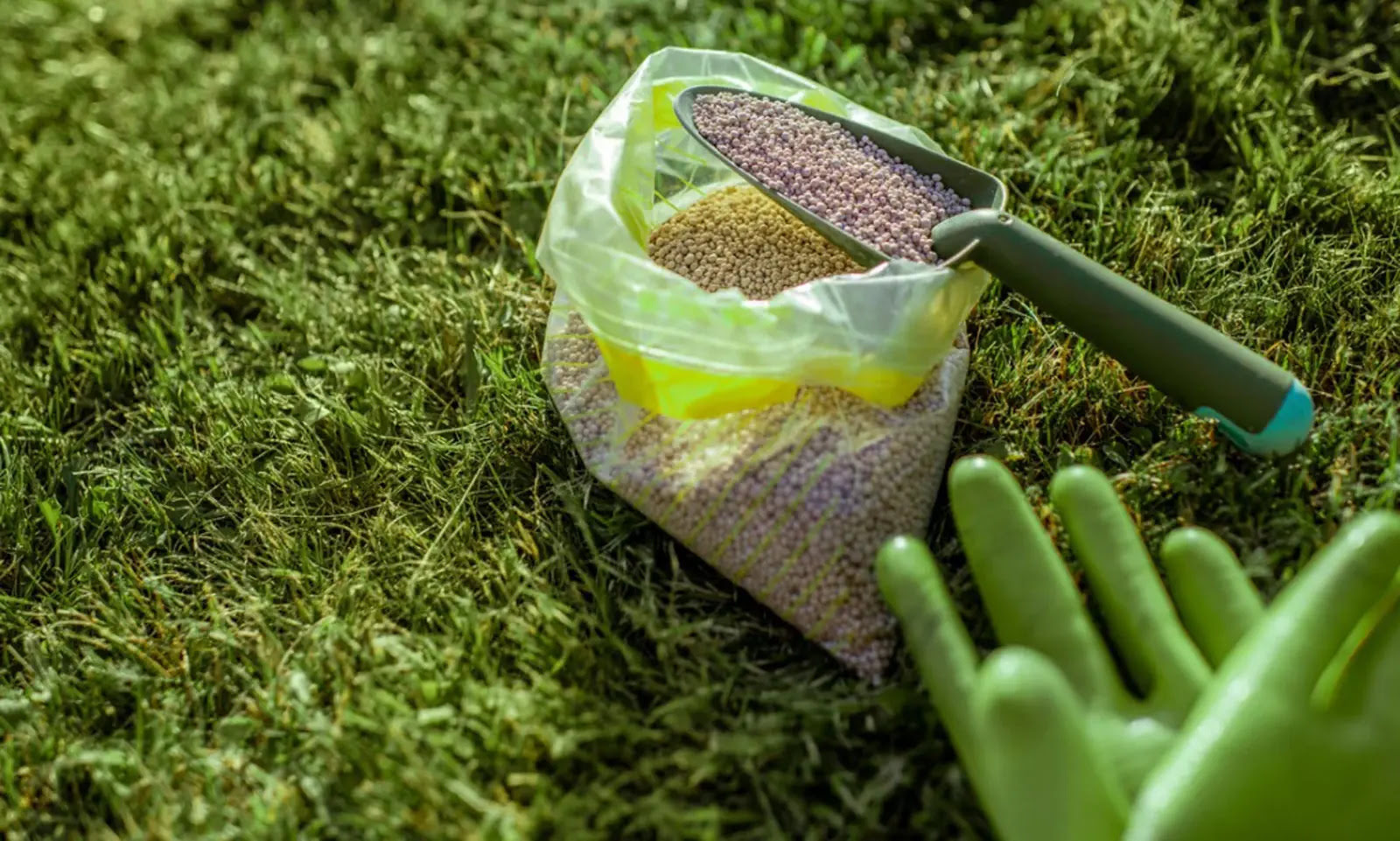

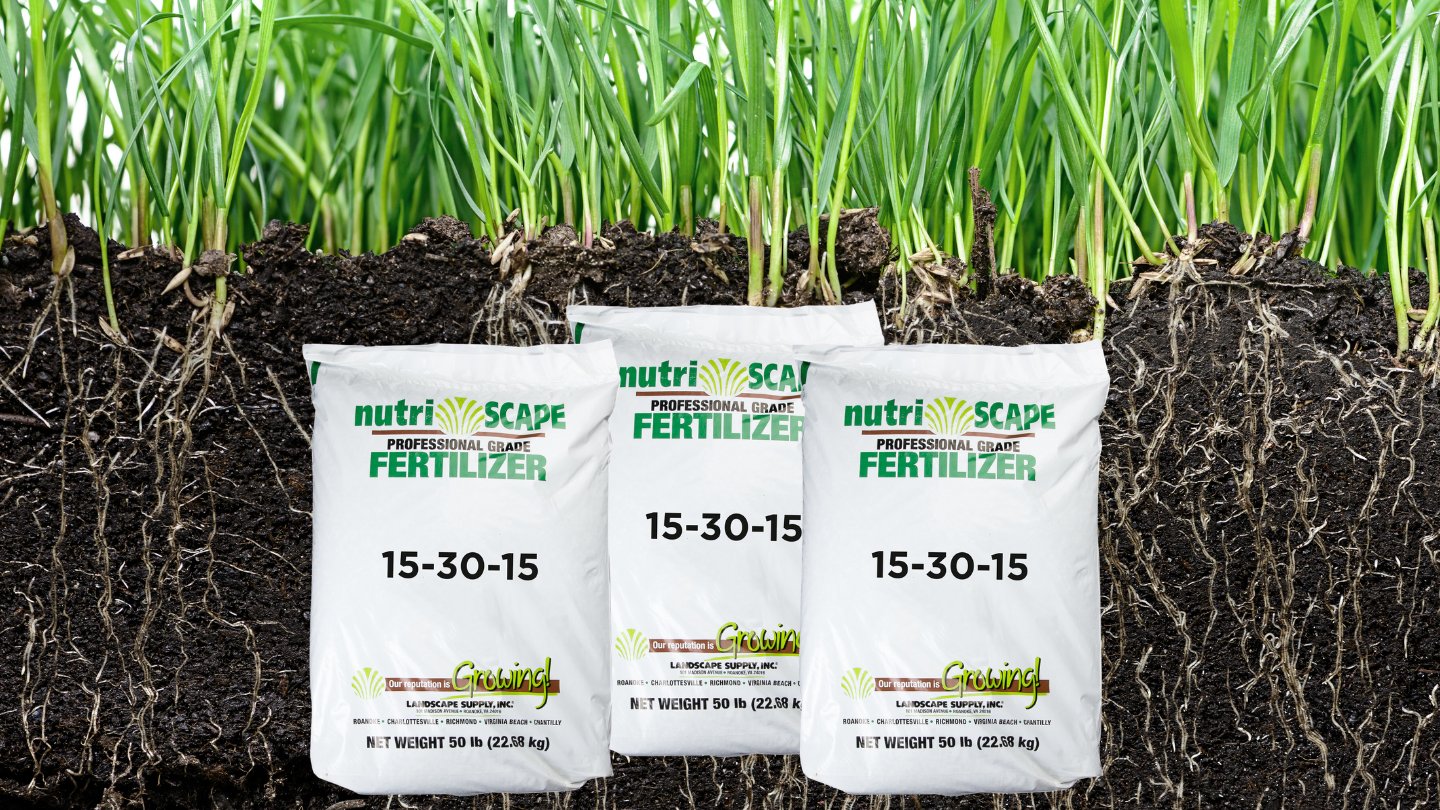
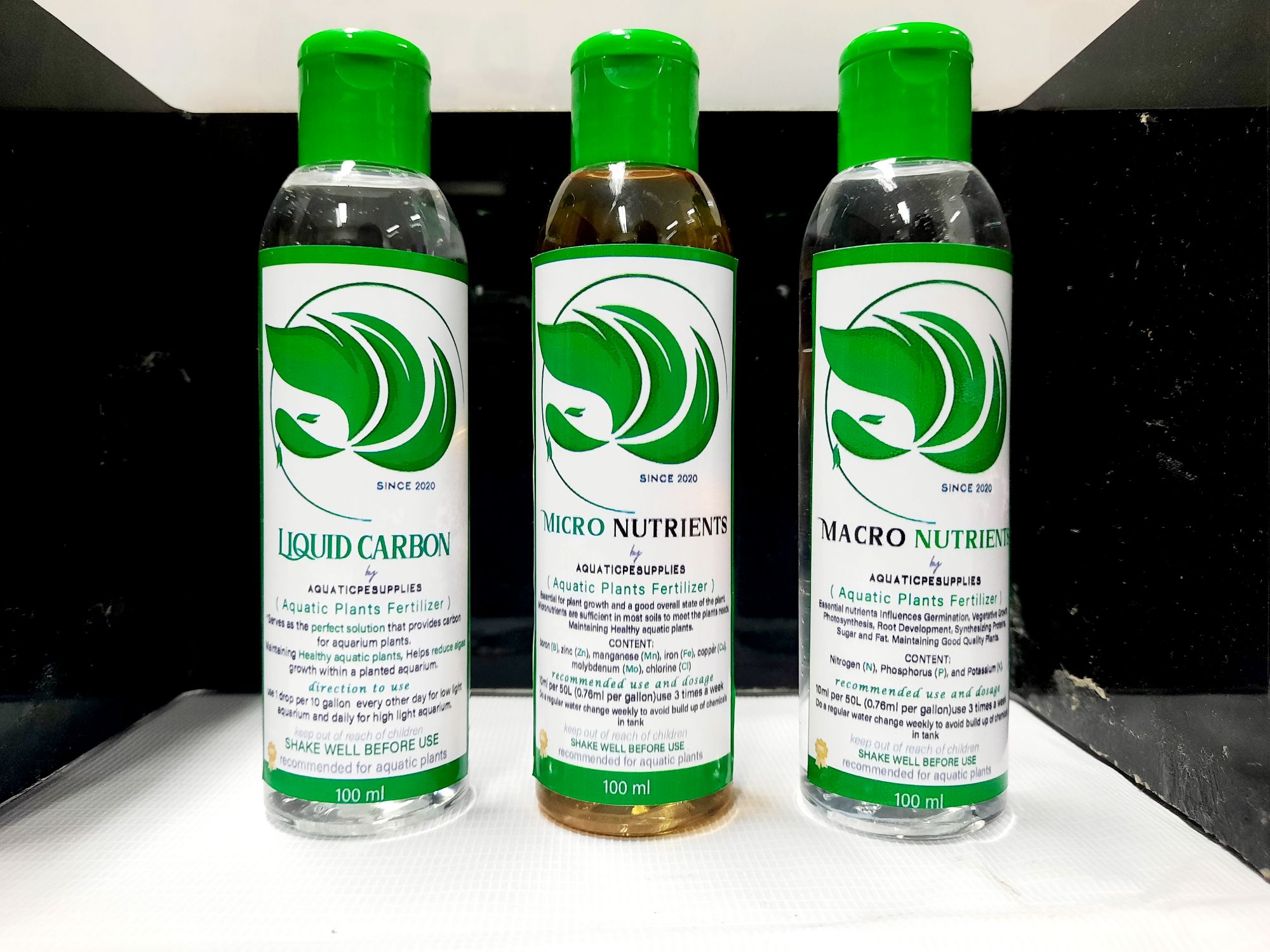
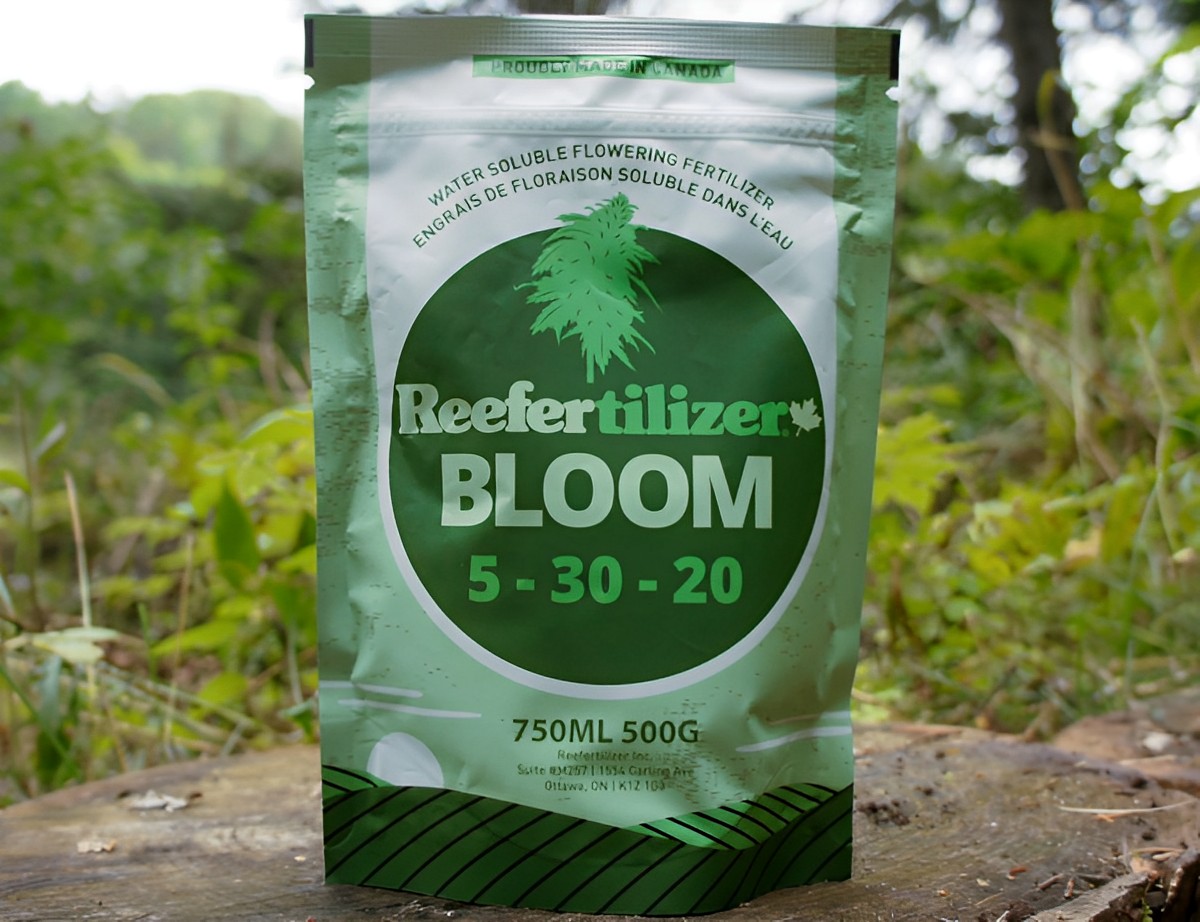
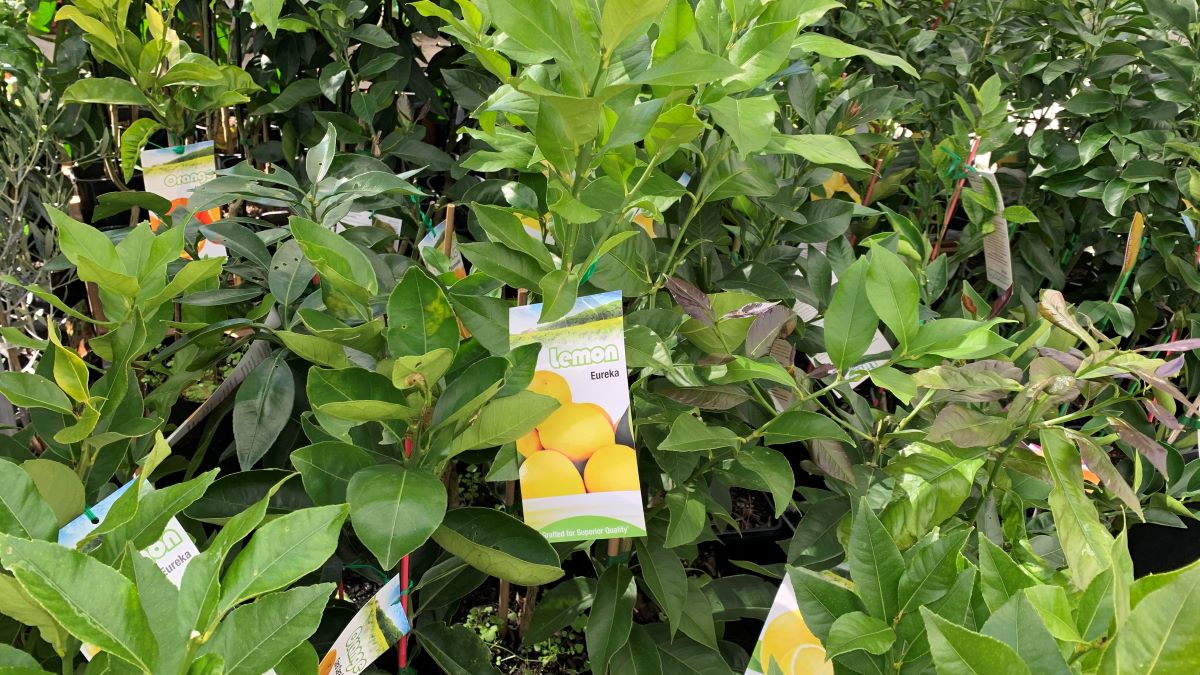
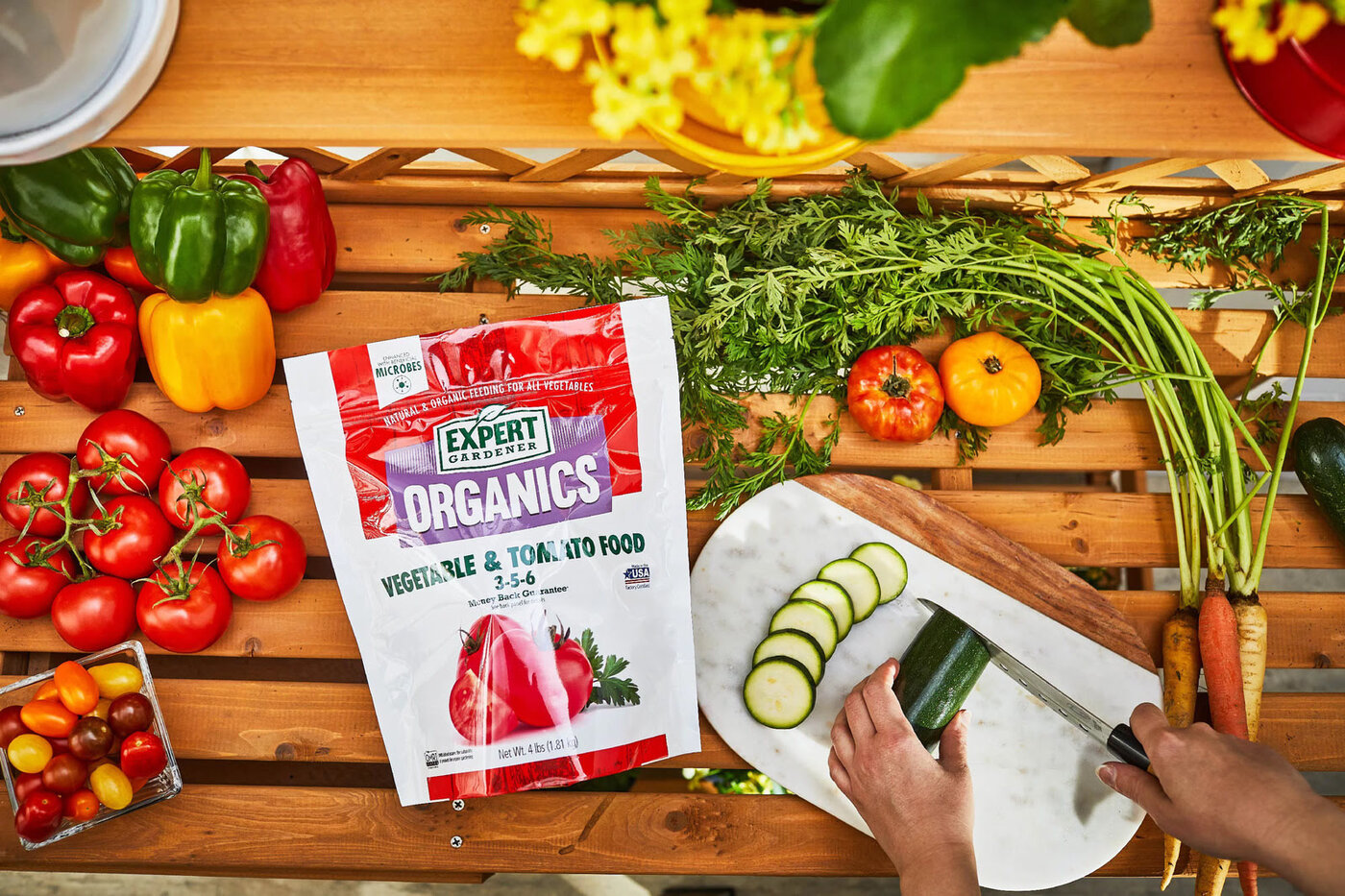


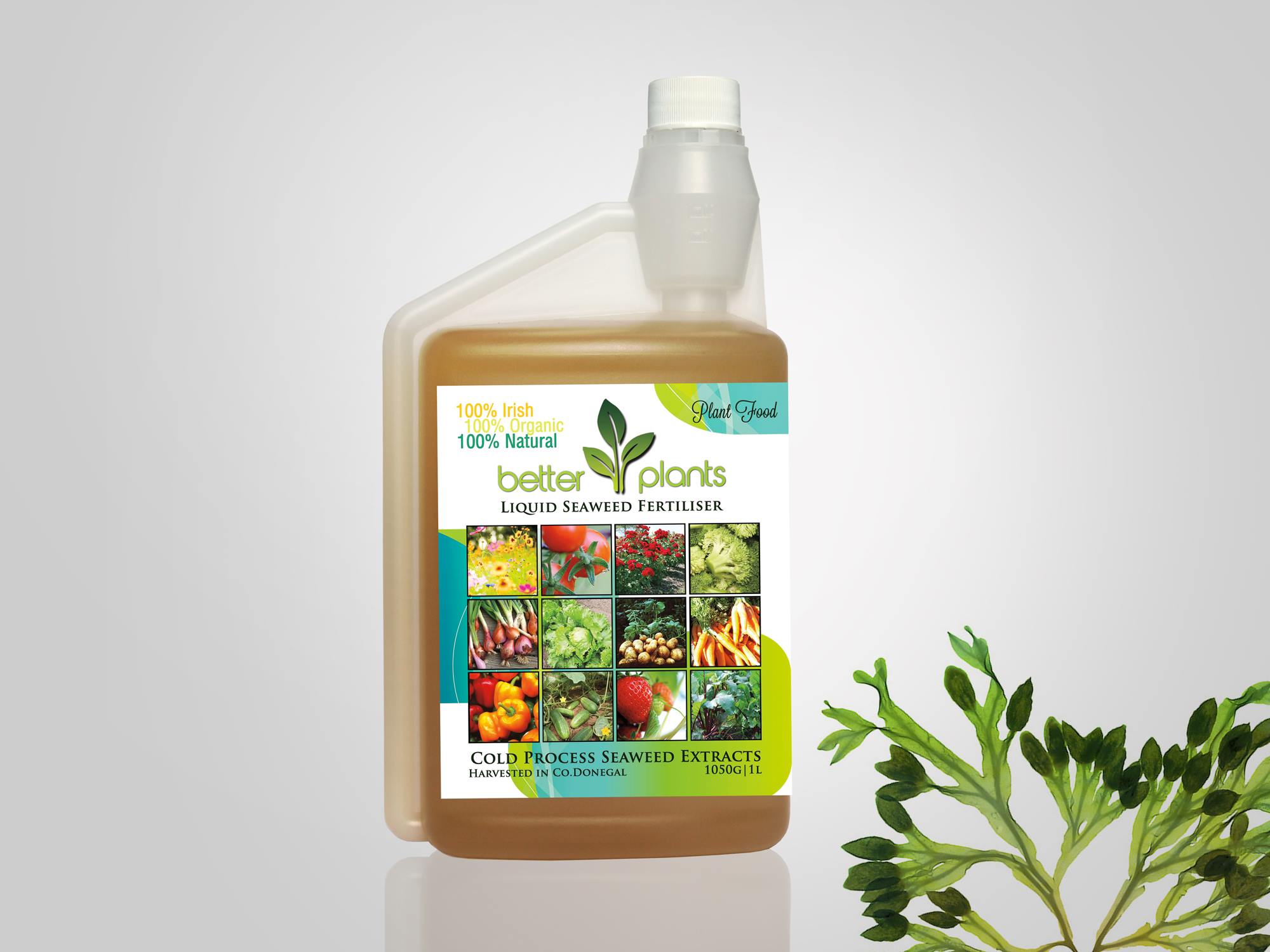


0 thoughts on “15 Best Potash Fertilizer 0-0-60 for 2025”